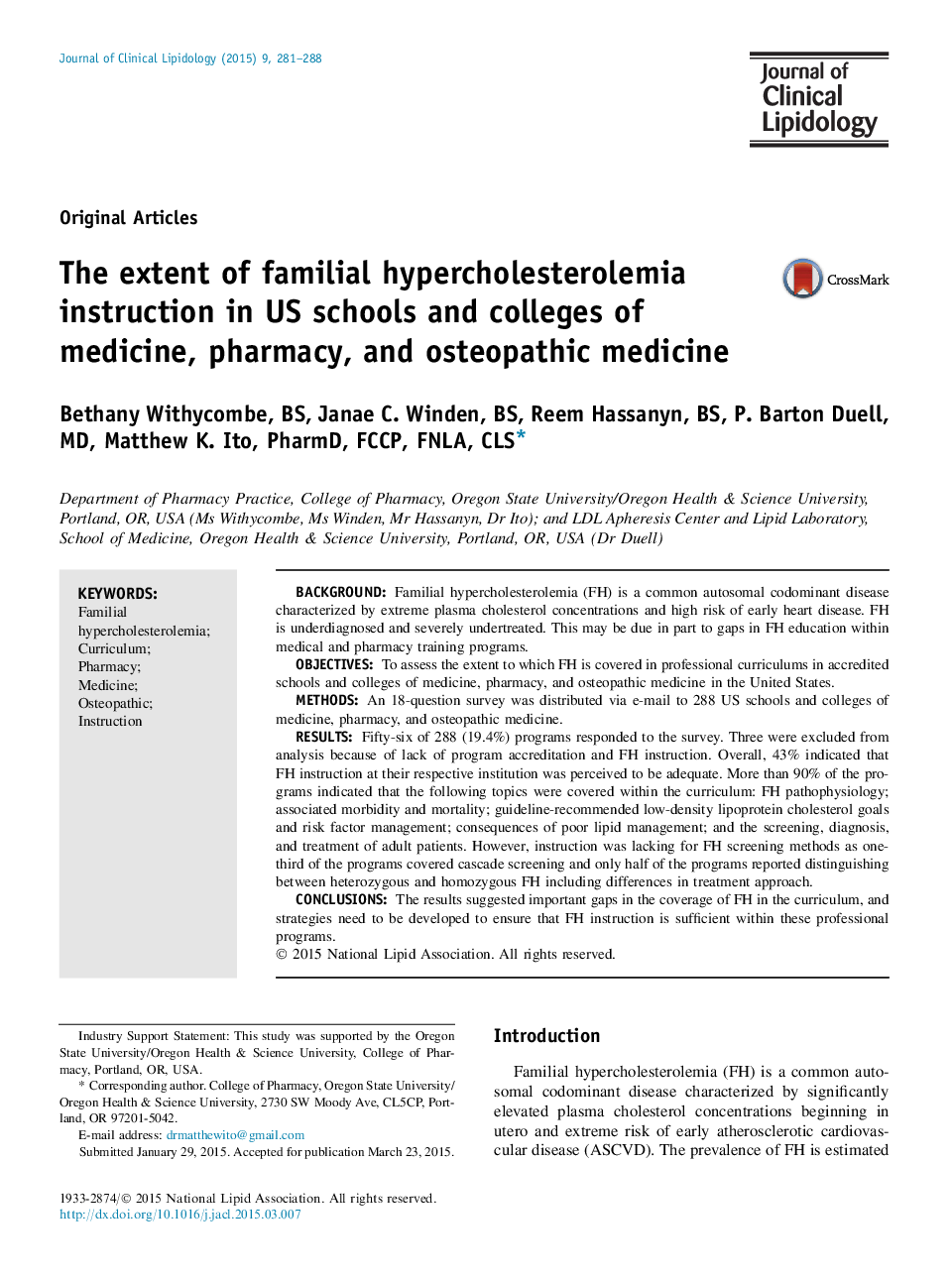| Article ID | Journal | Published Year | Pages | File Type |
|---|---|---|---|---|
| 5985536 | Journal of Clinical Lipidology | 2015 | 8 Pages |
â¢We assessed the extent of FH instruction in medical and pharmacy schools.â¢Important curricular gaps were identified.â¢Only one third of programs teach about cascade screening.â¢The clinical differences between heterozygous and homozygous FH was covered in only 1Ž2 the programs.â¢These gaps in knowledge of FH are consistent with those identified in practicing physicians.â¢Strategies are needed to reduce these gaps in an effort to enhance the diagnosis and treatment of FH.
BackgroundFamilial hypercholesterolemia (FH) is a common autosomal codominant disease characterized by extreme plasma cholesterol concentrations and high risk of early heart disease. FH is underdiagnosed and severely undertreated. This may be due in part to gaps in FH education within medical and pharmacy training programs.ObjectivesTo assess the extent to which FH is covered in professional curriculums in accredited schools and colleges of medicine, pharmacy, and osteopathic medicine in the United States.MethodsAn 18-question survey was distributed via e-mail to 288 US schools and colleges of medicine, pharmacy, and osteopathic medicine.ResultsFifty-six of 288 (19.4%) programs responded to the survey. Three were excluded from analysis because of lack of program accreditation and FH instruction. Overall, 43% indicated that FH instruction at their respective institution was perceived to be adequate. More than 90% of the programs indicated that the following topics were covered within the curriculum: FH pathophysiology; associated morbidity and mortality; guideline-recommended low-density lipoprotein cholesterol goals and risk factor management; consequences of poor lipid management; and the screening, diagnosis, and treatment of adult patients. However, instruction was lacking for FH screening methods as one-third of the programs covered cascade screening and only half of the programs reported distinguishing between heterozygous and homozygous FH including differences in treatment approach.ConclusionsThe results suggested important gaps in the coverage of FH in the curriculum, and strategies need to be developed to ensure that FH instruction is sufficient within these professional programs.
